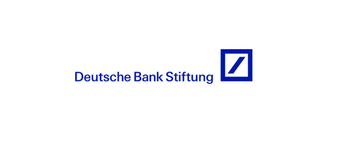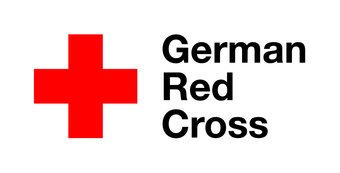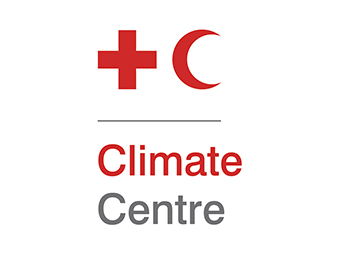Categories
Forecast-based financing (FbF) in Kyrgyzstan
In January 2019 the Red Crescent Society of Kyrgyzstan (RCSK) with technical support of the German Red Cross (GRC) and close cooperation with the national hydrometeorological agency (Kyrgyzgydromet) and local Ministry of Emergency Situations (MoES) launched the "Forecast-based Financing (FbF)" project funded by the Deutsche Bank Stiftung (DBS).
Project objective
A three-year FbF project in Kyrgyzstan will support the local population with early measures to protect themselves and their belongings from the effects of extreme natural disasters and thus to prevent or at least reduce damage and suffering through timely intervention. In addition, the project is aimed at increasing cooperation among RCSK, Kyrgyzgydromet, as well as the MoES with respect to responding to emergencies in the country.
Key facts
Start/end date
January 2019 – December 2021
Hazards covered
Heat wave | Cold wave
Regions covered
Throughout the country
Early action sectors
Health
Anticipatory action protocols/plans in place
Heat wave
Cold wave
Number of people reached during the EAPs testing process
3,200 people (Heat wave EAP, summer 2019)
1,000 people (Cold wave EAP, winter 2019-2020)
5,800 people (Heatwave EAP, summer 2020)
Population reached during activations
Heat wave:
Activation in July 2022: 8,074 people (for a breakdown, see the IFRC's report)
Direct beneficiaries: 4,000 households and 600 elderly people living in eldercare facilities.
Indirect beneficiaries: 1,409,425 – people throughout the country
Cold wave:
Under development
Key actors/implementing partners
Red Crescent Society of Kyrgyzstan | German Red Cross | Kyrgyzhydromet (Kyrgyz Met Office) | Ministry of Emergency Situations | Red Cross Red Crescent Climate Centre
Anticipation in practice: Project description
Heatwaves in Kyrgyzstan generally occur from June to August. Temperatures can reach up to 49 °C, and historical trends show indicate that monthly average temperatures during these months has risen over the last 50 years. Unlike more dramatic disasters such as floods or cyclones, heatwaves cause more subtle impacts, putting market vendors, construction and farm workers, and other vulnerable populations at risk of heat stroke or other heat-related illnesses. In order to reduce the negative consequences of extreme heat on these populations, the Red Crescent Society of Kyrgyzstan is proposing to implement the following early actions:
- Dissemination of food parcels to vulnerable families to enable people to shelter at home during the heat
- Distribution of hygiene products to reduce rates of infection during the heat
- Distribution of information materials and installation of educational boards to educate people on how to prevent heat-related illnesses
- Installation of air conditioners at eldercare facilities to protect elderly populations from extreme heat
- Dissemination of early warning messages and information campaigns via videos, master classes, and SMS.
The heatwave protocol is triggered when Kyrgyzhydromet issues a forecast indicating that temperatures will be 7°С above the 30-year average for the season and area for three or more days. These forecasts provide RCSK with seven-days of lead time with which to take early action. Beneficiaries will be selected according to the indicators of vulnerability (Kyrgyzstan poverty rate map) and exposure (Kyrgyzstan poor population index map). These maps will be compared and overlaid with a heatwave forecast map.
Coldwaves in Kyrgyzstan generally occur between December and February. Low temperatures threaten livestock and contribute to acute respiratory diseases and other health problems among children, the elderly, the poor, and those who must continue to work outdoors. Although the cold wave EAP is still under development, the Red Crescent Society of Kyrgyzstan is considering the following early actions to mitigate the impact of cold waves:
- Distribution of non-food items, including heaters for homes, window insulation, blankets and warm clothing to protect vulnerable populations from the cold
- Dissemination of early warning and awareness messages via radio, television and newspaper and the Ministry of Emergency Situations’ cellphone warning system to educate people on how to protect themselves from the cold
- Distribution of essential food commodities to ensure people have sufficient supplies during the cold wave period (approximately one week).
- Mount outdoor heating shelters and warm beverages at strategic points in large cities to provide refuge for homeless people or outdoor workers.
The trigger for the cold wave EAP is under development.
Outcomes and lessons learnt
The EAP for Heat Waves was activated in July 2022
FbF is a new topic for Kyrgyzstan
Misunderstanding between Heatwave and Drought
Heatwave, in general, is not considered as a disaster in Kyrguzstan
There is a lack of historical data on heatwaves and cold waves
The name FbF created unrealistic expectations, therefore it was renamed into Forecast-based Action
It is of particular importance that the Red Crescent Society, being the biggest and oldest humanitarian organization in Kyrgyzstan, continues to be prepared and to respond to emergencies and disasters in the country. Thus application by the Red Crescent Society of the FbF mechanism in Kyrgyzstan is a good example of that.
Facts and figures
Key figures at a glance
Contact
Mr. Shavkat Abdujabarov
GRC FbF Project Coordinator
E-mail: shavkat.abdujabarov@germanredcross.de
Mr. Zamir Duisheev
RCSK FbF Project Coordinator
E-mail: z.duisheev@redcrescent.kg
Partner
Supported by:





